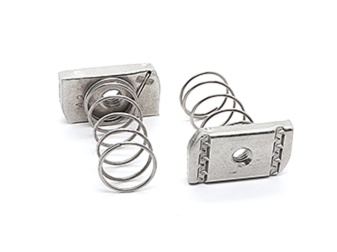Nov . 27, 2024 08:03 Back to list
Threaded Rod Jack for Versatile Lifting Solutions and Heavy-Duty Applications
Understanding the Threaded Rod Jack A Versatile Tool for Various Applications
In the world of engineering and construction, precision and reliability are paramount. One tool that has emerged as essential in this regard is the threaded rod jack. This versatile device is integral for various applications, ranging from automotive repair to heavy machinery support, and even in the construction of buildings and bridges.
What is a Threaded Rod Jack?
A threaded rod jack, often referred to simply as a jack, is a mechanical device used to lift or apply pressure to different objects. It typically consists of a long metal rod that is threaded along its length, allowing for adjustment in height and tension through a rotating mechanism. This design enables the user to increase the load-bearing capacity of the device, making it suitable for supporting heavy weights.
Threaded rod jacks come in various sizes, types, and materials to cater to different requirements. Whether it be a small jack for household repairs or a robust jack for industrial use, the principles remain the same.
How Threaded Rod Jacks Work
The fundamental operation of a threaded rod jack is based on the principle of the screw mechanism. As the user turns a handle or a screw, the threaded rod moves up or down, creating a lifting or lowering action. This feature is particularly useful in situations where space is limited, and precision is necessary.
In many applications, these jacks are used in conjunction with other tools. For example, in the automotive industry, a threaded rod jack might be employed to hold a vehicle in a stable position while repairs are made. In construction, it can be used to ensure that beams are securely positioned during the installation process.
Applications of Threaded Rod Jacks
1. Automotive Repair As mentioned, threaded rod jacks are widely used in garages and workshops. Mechanics rely on them to lift vehicles, allowing for safe and easy access to the undercarriage for maintenance and repairs.
threaded rod jack

2. Construction Support In construction, these jacks serve a crucial role in providing support during the erection of structural frames. They ensure that components remain aligned until they can be permanently fixed in place, contributing to the overall safety and stability of the building.
3. Machinery Installation Heavy machinery often requires precise leveling. Threaded rod jacks can be adjusted easily to achieve the desired height, ensuring that machines operate efficiently and safely.
4. Furniture Assembly In the furniture industry, threaded rod jacks allow for the efficient assembly of heavy items such as cabinets and bookshelves. They help in adjusting panels to fit together accurately, providing a clean and professional finish.
5. Bridge and Roadway Construction Engineers use threaded rod jacks for temporary support during bridge construction and repairs. They facilitate the aligning and securing of heavy sections of steel or concrete, ensuring that structural integrity is maintained.
Advantages of Using Threaded Rod Jacks
The advantages of threaded rod jacks are numerous. They provide exceptional load-bearing capabilities and are adjustable, making them suitable for various heights and weights. Furthermore, their simplicity and ease of use make them appealing for both professionals and DIY enthusiasts.
Additionally, threaded rod jacks are often lightweight and portable, allowing them to be used in various environments without extensive equipment. They are also relatively low-cost compared to other lifting devices, making them a practical choice for many applications.
Conclusion
In conclusion, threaded rod jacks play a pivotal role in a myriad of industries, including automotive, construction, and manufacturing. Their design and functionality make them an indispensable tool, enabling users to lift and provide support with accuracy and safety. As technology continues to evolve, threaded rod jacks will likely see advancements in design and materials, further enhancing their usefulness and efficiency in various applications. Understanding this tool’s capabilities can empower users to tackle a wide range of projects with confidence and precision.


